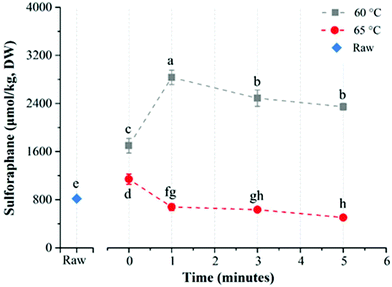To follow up Week 8 of Changing to a youthful phenotype with broccoli sprouts:
1. This week has really been different.
A. Physically, on Friday Eve I worked out per my usual upper-body-workout-every four-days routine. I felt strong, and on one exercise I increased the weight by 33%. No problem doing the same number of reps and sets! Keeping good form was challenging.
Per Week 7, I eight-count each concentric rep slowly, then perform each eccentric rep to the same count, with a goal to reach muscle exhaustion during each set. Then pause and do another set.
What changed? Could I have done all this before?
No. I’d tried, making baby steps with increasing weight and keeping good form. But now I can, and I’ll do it again, along with other physical challenges.
B. Seven blog posts this week show improved cognitive function. Is A claim of improved cognitive function sufficient evidence?
Awakening was how it felt. Waking up to what I didn’t see before.
C. This 35th blog post for May comes after 30 posts in April. It wasn’t my goal to do one a day. It’s my goal to Surface Your Real Self. Did a few of them help?
I hope to do other things with my life in June. But the fact remains that humans are herd animals. We “think in herds, go mad in herds, while they [we] only recover their [our] senses slowly, one by one.” We’ll stay in the Madness of Crowds phase until enough people refuse to be propagandized.
2. As a result of reading A pair of broccoli sprout studies, I changed practices to start batches with one tablespoon of broccoli seeds twice a day so I could consume broccoli sprouts twice daily. Right now it’s a PITA task that requires optimization.
The two studies’ findings were:
- Broccoli sprouts are better than supplements.
- Eating sprouts twice a day is better than eating them once a day.
- When in doubt, refer back to Item 1.
3. I reordered broccoli seeds and will receive them next week. In the meantime, I introduced yet another unknown by consuming sprouts that came from a different vendor:
These seeds are smaller. Hundreds of seeds and seed coats annoyingly pass through my strainer, which didn’t happen with larger seeds. 3-day-old sprout sizes are smaller, and they smell and taste different.
This vendor put “seed” four times on their label. The other vendor didn’t bother to put “seed” even once on their broccoli seed package label.
Like other vendors, they prefer buzzword marketing with “microgreen” and “sprouting” rather than provide useful consumer information such as number of seeds and broccoli variety characteristics. Will people buy “Broccoli Sprouting Seeds” but won’t buy Broccoli Seeds? Do people say “Cool beans!” anymore?
My reorder states there are ~720,000 broccoli seeds in that 5 lb. package. I’ll update with its volume after it arrives.
See Week 10 of Changing to a youthful phenotype with broccoli sprouts for follow ups.

















